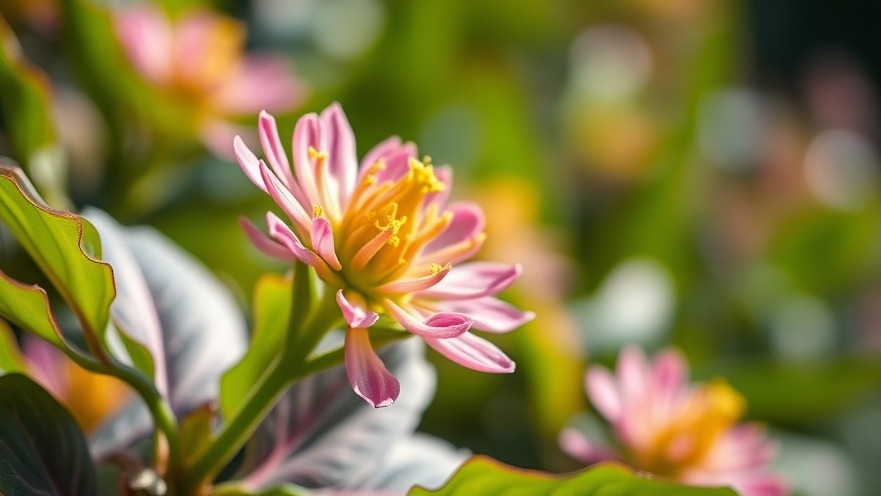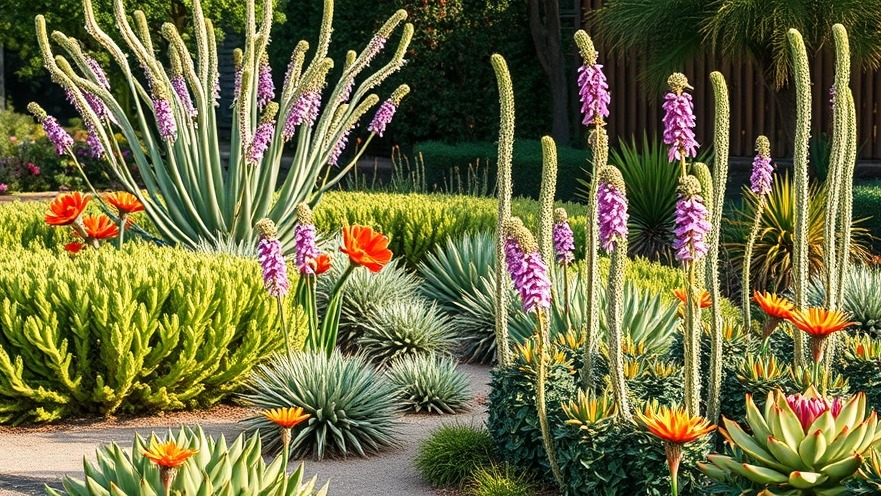
Why You Should Grow a Curry Plant in Your Garden
The curry plant (Helichrysum italicum) offers delightful benefits beyond its aromatic leaves. This evergreen perennial is not only visually appealing with its silvery foliage and bright summer flowers, but it is also drought-tolerant, making it an ideal addition to eco-friendly landscaping and Mediterranean-style gardens. As homeowners strive to incorporate eco-friendly gardening practices, the curry plant serves as a low-maintenance option that aligns with sustainable home design.
Getting Started: Choosing the Right Location
When planting your curry plant, it's crucial to select a site that offers full sun and well-draining soil. This ensures optimal growth and minimizes water usage, supporting water conservation efforts in your garden. Given its mature size of approximately 45-60 cm, curry plants make excellent border plants or can be used to create informal hedges while encouraging natural landscaping principles.
Seeds: Your First Step in Growing Curry
Start your journey by sowing seeds in spring. Use peat-free seed compost, sprinkling the seeds on the surface, and covering them lightly with vermiculite. Placing them in a heated propagator set to around 22°C will encourage germination within 7-10 days. Once the seedlings have outgrown their initial space, transplant them into individual pots, taking care to adapt them to outdoor conditions gradually.
Planting and Caring for Your Curry Plant
Transplant the curry plants outdoors after the threat of frost has passed. This plant thrives when provided with free-draining soil and plenty of sunlight. Once established, your curry plant will require minimal care. Regular deadheading and pruning twice a year will keep it looking neat and vibrant, preventing leggy growth.
Environmental Benefits of the Curry Plant
Unlike more water-intensive plants, the curry plant promotes energy efficiency in your garden. Its drought tolerability contributes to lower water usage. Additionally, its culinary uses extend to fresh herb teas and flavorful dishes, further reducing reliance on store-bought options laden with chemicals, thus promoting toxin-free home upgrades.
Challenges and Considerations
Even with its many advantages, growing curry plants can pose challenges, especially in cooler climates. Protect the roots during winter by applying a dry straw-based mulch or overwintering in pots. This will support your long-term success in cultivating a sustainable garden.
Incorporating Curry Plants into Your Gardening Goals
Adding curry plants to your garden is not just about aesthetics or culinary enhancement; it’s a step towards creating a sustainable lifestyle. These plants exemplify zero-waste practices by allowing you to utilize garden resources creatively. From culinary uses to beautifying your outdoor space, curry plants perfectly integrate sustainable living into your daily routine.
Final Thoughts: Start Your Sustainable Journey
Growing a curry plant is a great way to begin your journey into sustainable home design. Not only do you reduce your carbon footprint, but you also enjoy the pleasant aroma and culinary benefits of this unique herb. Take the plunge into eco-friendly gardening today!
 Add Row
Add Row  Add
Add 




Write A Comment